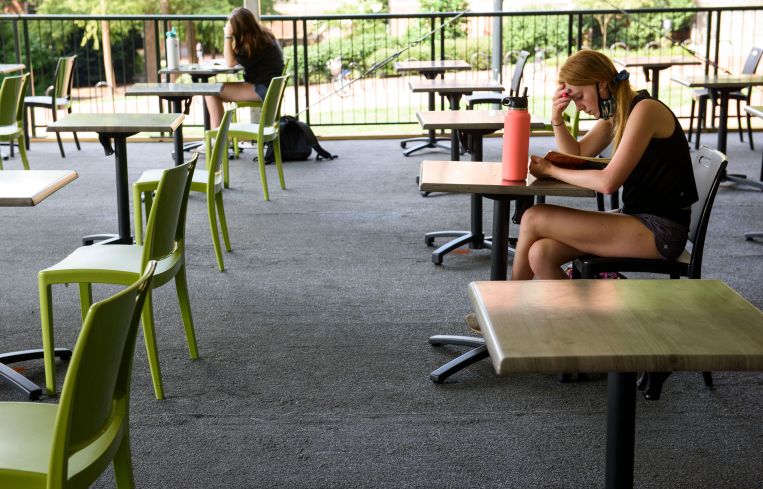To Fix the Office, Go Back to College
By Peter Schubert March 25, 2024 9:15 am
reprints
The nonstop prognostication about the future of office work over the past four years has been enough to give anyone whiplash. First, we were all happy working at home temporarily, then we were never coming back to the office, then we were all coming back at a date to be determined but never arrived, and now we’re embracing a hybrid future.
I don’t mean to downplay the macroeconomic situation — even a 10 or 20 percent drop in office usage could and will have a seismic impact, especially for property owners and the lenders and service providers that support them. But, for the vast majority of what we used to call “office workers,” the evolving office environment still plays some part in every workweek, and it’s not going away.
And for good reason! All the data shows teams are more creative and effective when people collaborate face to face more often. And, despite the most dire warnings about artificial intelligence, surely we’re not at a point where communication and exchange of ideas is “a nice to have” and not a “must have.”

But we all agree that something has changed about our office experience. There’s been a flight to quality, so maybe you are working in a nicer building. And employers have rolled out the red carpet to get people back, so you could be reading this from the office golf simulator or a new café with free cold brew on tap, or sitting on a fancy couch snacking on a Michelin-starred “grab and go” lunch!
If you think about it, a lot of these ideas come from academia. Consciously or not, we’ve been trying to make the office feel more like a university student center. A café here, a lounge there, a foosball table down the hall.
It’s the right instinct, because college is often the most productive learning period in our lives — all about communication, collaboration, camaraderie and mutual challenge. Over the last decade-plus, higher education architecture has allowed for campus’ multimedia and multitask venues to flourish. Ennead Architects’ Knight Campus for Accelerating Scientific Impact at the University of Oregon, and the recently opened reimagination of the former Newseum for Johns Hopkins in Washington, D.C., are both good examples of how the built space is central to the curriculum.
Yet the depth of those ideas hasn’t quite made it into the office. To date, untold millions have been spent on upgrading offices, but we still haven’t found the secret sauce to replicate the productivity of the college campus.
For those educated in the last 15 years, every kind of seating arrangement is the norm, from horseshoe lecture venues to more casual chair arrangements where the interaction among the students guided by the teacher is essential. These newer buildings have arrived at a point where the physical environment is now part of a curriculum that facilitates the possibilities of innovation, strategy and communication.
University curriculum relies on a wide variety of physical spaces, from the lecture hall and the small classroom, to the café and the stairway that connects two floors of students and professors. The very nature of moving around and finding the right space to study, be it a hideaway cubicle in the library or the student union, is an encouraged choice.
Today’s job recruits are familiar with the spaces of campus experience and know how to operate within this collaborative environment. There’s no doubt the anonymous and repetitive workstation environment of pre-pandemic office is a letdown after campus life. If coming back to work is a goal for employers, and younger workers with no office experience are a tough draw, then these curated campus environments may be the ticket and enticement.
The office environment is typically a floor-by-floor stratification. But the diagonal viewpoint through a building, whether a simple atrium or a series of connecting stairs and spaces, suggests a community of people and space that no Zoom call can initiate.
It’s multiple environments that provide different perspectives, opportunities, moods and feelings that in turn inspire contagious innovation within a campus setting. Offices of the future should replicate the learning environment, upon which much of our professional foundation is based.
Physical space alone isn’t the answer, and this is a place where most offices fall short. University spaces are deeply programmed, with orchestrated community learning events and curated thought opportunities available at all times of day. This kind of curation can’t be replicated at home, and when coupled with well-designed, diverse physical spaces, can help achieve the type of innovation we experienced on campus.
We now know that the office is here to stay. To make it a place worth being, we could all benefit from a trip back to school.
Peter Schubert is a partner at architecture firm Ennead Architects and a fellow of the American Institute of Architects.



